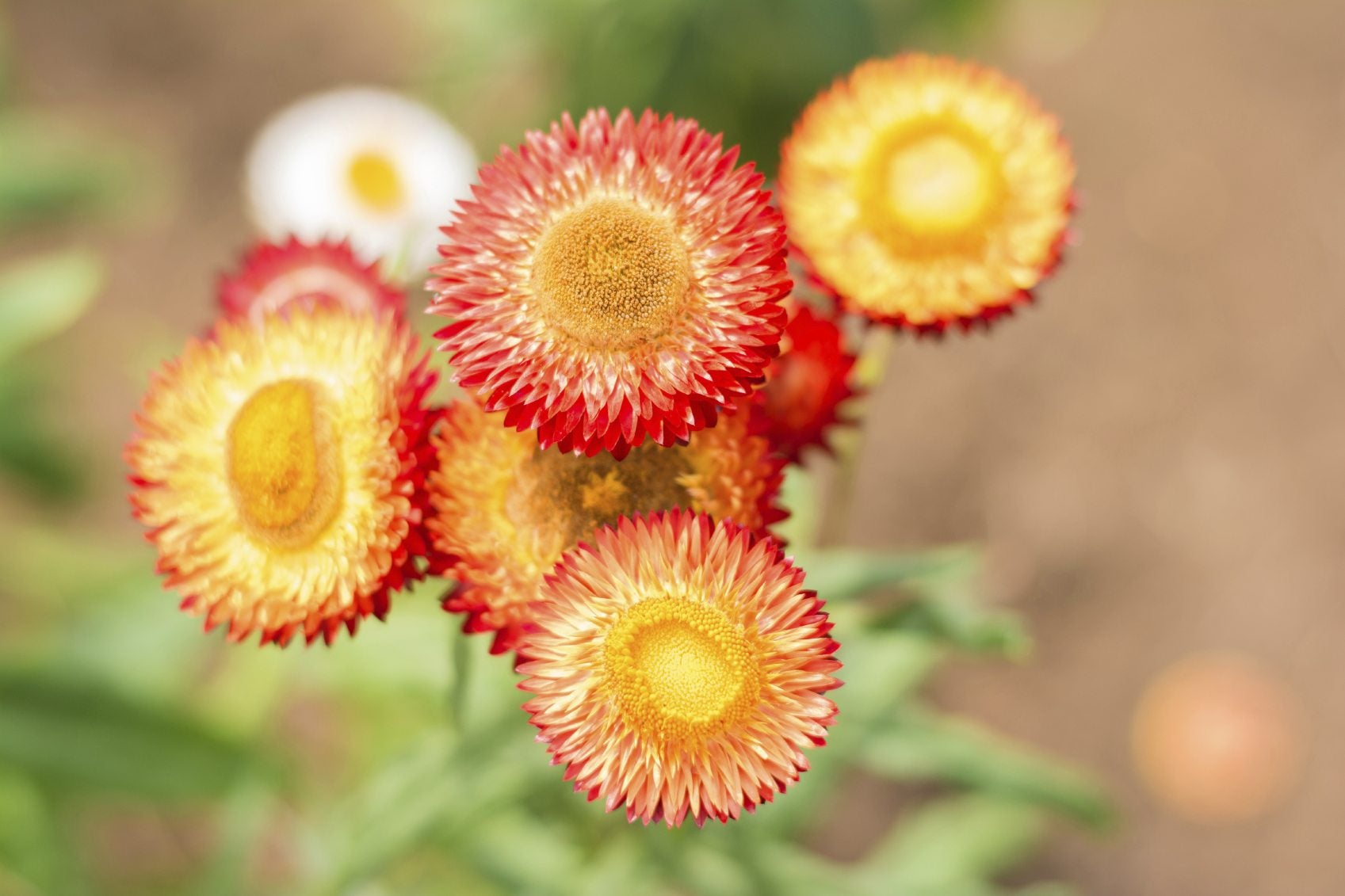Annual Strawflower: Information On How To Grow Strawflowers


What is a strawflower? This heat-loving, drought-tolerant plant is valued for its charming, straw-like blooms in bright shades of red, orange, pink, purple, yellow, and white. A dependable annual, strawflower is easy to get along with, rewarding you with non-stop blooms from summer until the first hard frost.
Growing Conditions for Strawflowers
Strawflowers (Helichrysum bracteatum syn. Xerochrysum bracteatum) are members of the daisy family and growing conditions are similar. They are well-suited for the sunniest spot in your garden. Strawflowers are heat tolerant and they grow in nearly any well-drained soil.
How to Grow Strawflowers
It's easy to plant strawflower seeds directly in the garden after you're sure all danger of frost has passed. Dig the soil to a depth of at least 8 to 10 inches (20.3-25.4 cm.). Strawflowers don't require rich soil but they'll be happy if you dig in 2 to 3 inches (5.0-7.6 cm.) of compost before planting. Sprinkle the seeds lightly on the surface of the soil. Water them lightly with a spray attachment, but don't cover the seeds with soil. Thin the plants to a distance of at least 10 to 12 inches (25.4-30.5 cm.) when the seedlings are 2 to 3 inches (5.0-7.6 cm.) tall. Don't crowd the plants; strawflowers require excellent air circulation to prevent mildew and other moisture-related diseases. You can also plant strawflower seeds indoors six to eight weeks before the last frost. Fill a planting tray with a lightweight commercial potting mix and sprinkle the seeds on the surface of the mix. Water carefully to ensure the seeds make firm contact with the potting mix but don't block sunlight by covering the seeds with soil. Cover the tray with clear plastic to keep the environment warm and moist, then remove the plastic as soon as the seeds germinate. Transplant the seedlings to individual pots when they have at least one or two sets of true leaves (leaves that appear after the tiny seedling leaves). Place the tray in a sunny room where the temperature is cool at night. Water as needed to keep the soil slightly moist but never soggy and feed the seedlings with a weak fertilizer solution every two weeks. Plant the strawflowers outdoors when all danger of frost has passed.
Strawflower Care
Strawflowers require very little care. Water the plants only when the soil feels slightly dry. Avoid wet, soggy soil, as strawflowers are prone to rot in wet conditions. If possible, water with a hose or drip system to keep the foliage dry. Otherwise, maintenance involves simply pinching off faded flowers to promote continual blooming throughout the season.
Gardening tips, videos, info and more delivered right to your inbox!
Sign up for the Gardening Know How newsletter today and receive a free copy of our e-book "How to Grow Delicious Tomatoes".

A Credentialed Garden Writer, Mary H. Dyer was with Gardening Know How in the very beginning, publishing articles as early as 2007.
-
 Zinnias On Repeat: 10 Glorious Cut-And-Come-Again Varieties For Endless Summer Bouquets
Zinnias On Repeat: 10 Glorious Cut-And-Come-Again Varieties For Endless Summer BouquetsThese zinnia varieties keep giving all summer, making them the perfect choice for dedicated cutting gardens – or just the occasional homegrown bouquet.
By Ellen Wells
-
 Create A Romantic Garden Straight Out Of Bridgerton: Regency Era Romance In Your Garden
Create A Romantic Garden Straight Out Of Bridgerton: Regency Era Romance In Your GardenTry some romantic garden ideas straight out of Bridgerton. Flowers and gardens in the Regency era were lush and charming and you can get the same look!
By Bonnie L. Grant